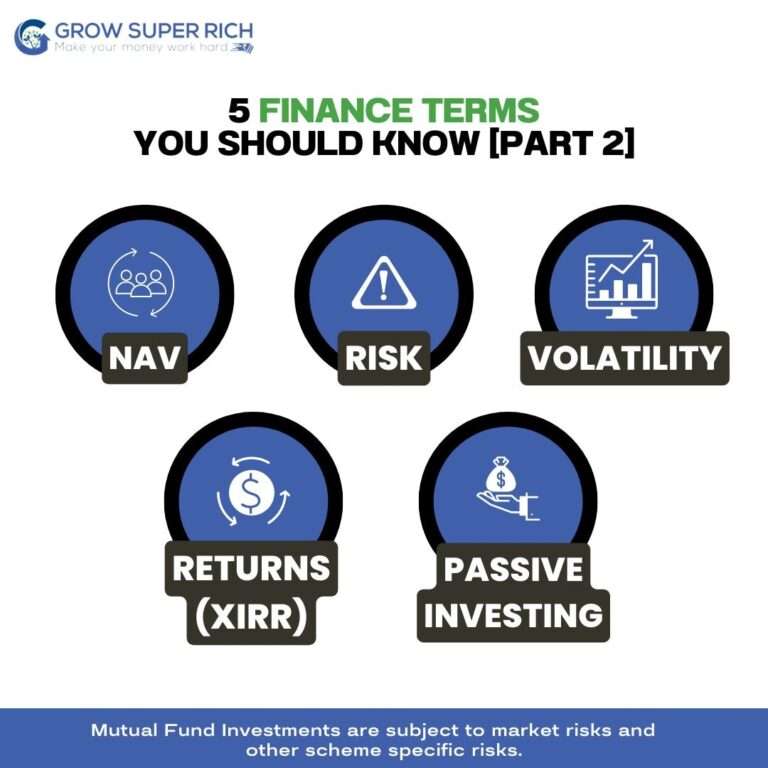Rebalancing or Not
- For investors seeking to build the best investment portfolio, one key consideration is whether to rebalance their portfolio or not.
- As we saw in Portoflio Rebalancing write up it is the process of adjusting the allocation of assets in a portfolio to align with the investor's risk tolerance and long-term goals.
- While rebalancing can be an effective way to manage risk and maintain diversification, it can also come with costs such as transaction fees and tax costs.
The following discussion discusses some alternative viewpoints and implementation nuances of Rebalancing.
Never Rebalance ?
There are a few advantages to not rebalancing a portfolio, particularly if the focus is on maximizing long-term wealth rather than managing short-term volatility.
• Reduced transaction costs: By avoiding the costs of buying and selling assets, investors can potentially increase the overall returns of the portfolio.
• Reduced tax costs: For taxable portfolios, not rebalancing can minimize tax costs by reducing the number of capital gains generated.
• Fewer timing risks: By not rebalancing, investors can avoid the risks associated with making decisions about when to buy and sell assets.
However, it is important to note that not rebalancing a portfolio can also come with potential drawbacks.
• Increased risk: A portfolio that is not rebalanced may become heavily weighted in certain assets or sectors, which can increase risk and reduce diversification.
• Missed opportunities: Not rebalancing can also miss out on opportunities to capture gains and improve the overall performance of the portfolio.
Once a diversified portfolio of good businesses or index has been chosen the ‘Never Rebalance’ approach is to just hold the portfolio through the ups and downs. This provides a long term wealth that is more than a re-balanced portfolio is most cases.
Behavioral Risk of Never Rebalancing
One important disadvantage of never rebalancing a portfolio is the risk of being influenced by behavioral biases that can lead to ill-timed buy and sell decisions.
For example, if an asset class has performed well and become a larger portion of the portfolio, an investor may be tempted to sell some of the asset in order to lock in gains. However, if the asset continues to perform well after the sale, the investor may regret the decision and miss out on potential profits.
Similarly, if an asset class has performed poorly and become a smaller portion of the portfolio, an investor may be tempted to buy more of the asset in the hope of a rebound. However, if the asset continues to decline in value, the investor may end up incurring losses.
By not rebalancing, investors may be more prone to making these kinds of buy and sell decisions based on short-term performance, rather than adhering to a long-term investment strategy. This can increase the risk of making poorly timed decisions and potentially harm the overall performance of the portfolio.
<br
In contrast, rebalancing can provide a behavioral anchor that helps to prevent these kinds of impulsive buy and sell decisions. By periodically adjusting the allocation of assets in the portfolio to align with the investor's long-term risk tolerance and investment goals, rebalancing can help to maintain discipline and minimize the risk of making poorly timed decisions.</br
Rebalancing Implementation
Rebalancing a mutual fund portfolio refers to the process of bringing the allocation of the portfolio back in line with the desired asset allocation. There are three main approaches to rebalancing a mutual fund portfolio: time-based rebalancing, threshold-based rebalancing and a combined approach.
Time Based Rebalancing:
Time-based rebalancing involves rebalancing the portfolio at regular intervals, such as annually or quarterly. This approach is simple and easy to implement, as it doesn't require continuous monitoring of the portfolio. However, it may not be the most tax-efficient approach, as it can trigger capital gains taxes if the portfolio has appreciated significantly.
Threshold based Rebalancing
Threshold-based rebalancing involves setting predetermined limits, or "thresholds" for each asset class in the portfolio. When the allocation of an asset class exceeds the threshold, the portfolio is rebalanced to bring it back in line with the desired asset allocation. This approach allows for more flexibility and can potentially be more tax-efficient, as it doesn't require rebalancing as frequently as time-based rebalancing. However, it does require more monitoring and may be more difficult to implement.
Time and Threshold combined
It is possible to combine time-based and threshold-based rebalancing approaches. One way to do this is to use time-based rebalancing as the primary approach, but to also set threshold limits for each asset class in the portfolio. The portfolio would then be rebalanced at time intervals decided (such as annually or quarterly) only when an asset class exceeds its threshold during that review.
For example, you might set a threshold of (+/- 5%) for each asset class in your portfolio and rebalance annually. If the allocation of an asset class exceeds the (+/- 5%) threshold on the annual rebalancing date, the portfolio would be rebalanced to bring it back in line with the desired asset allocation. If the annual rebalancing date arrives and none of the asset classes have exceeded their thresholds, the portfolio would not be left alone till next annual rebalancing.
This approach combines the simplicity of time-based rebalancing with the flexibility and greater tax-efficiency of threshold-based rebalancing.
And based on numerous studies there is very little gain by balancing too frequently or reacting to very small changes to threshold - so for a mutual fund portfolio annual portfolio rebalancing is adequate and only when defined threshold limit is exceeded.
Rebalancing more often does not allow our best investment portfolio decisions the time to run and provide the necessary gains to capture in the process.
Summary
A diversified mutual fund portfolio aligned with your financial goals is generally considered to be the best investment portfolio.
Rebalancing your portfolio periodically can help ensure that it stays well-balanced and aligned with your financial goals.
However, not Rebalancing avoids timing risk, transaction costs, and tax costs, associated with Rebalancing.
Not Rebalancing however exposes investor to behavioural risks of selling at inopportune moments.
Rebalancing can be done based on time (quarterly, annual) or Threshold (on 5% of deviation).
Rebalancing mutual fund portfolio less frequently( annually) and only on exceeding a certain threshold( say 5%) is adequate to capture the benefits as well as reduce taxes and transaction costs.
Rebalancing more frequently does not allow our best investment portfolio decisions the time to perform and provide the necessary gains on equity sides to capture during rebalancing event.
Hence a measured approach is needed to choose the timing and threshold of Rebalance.




